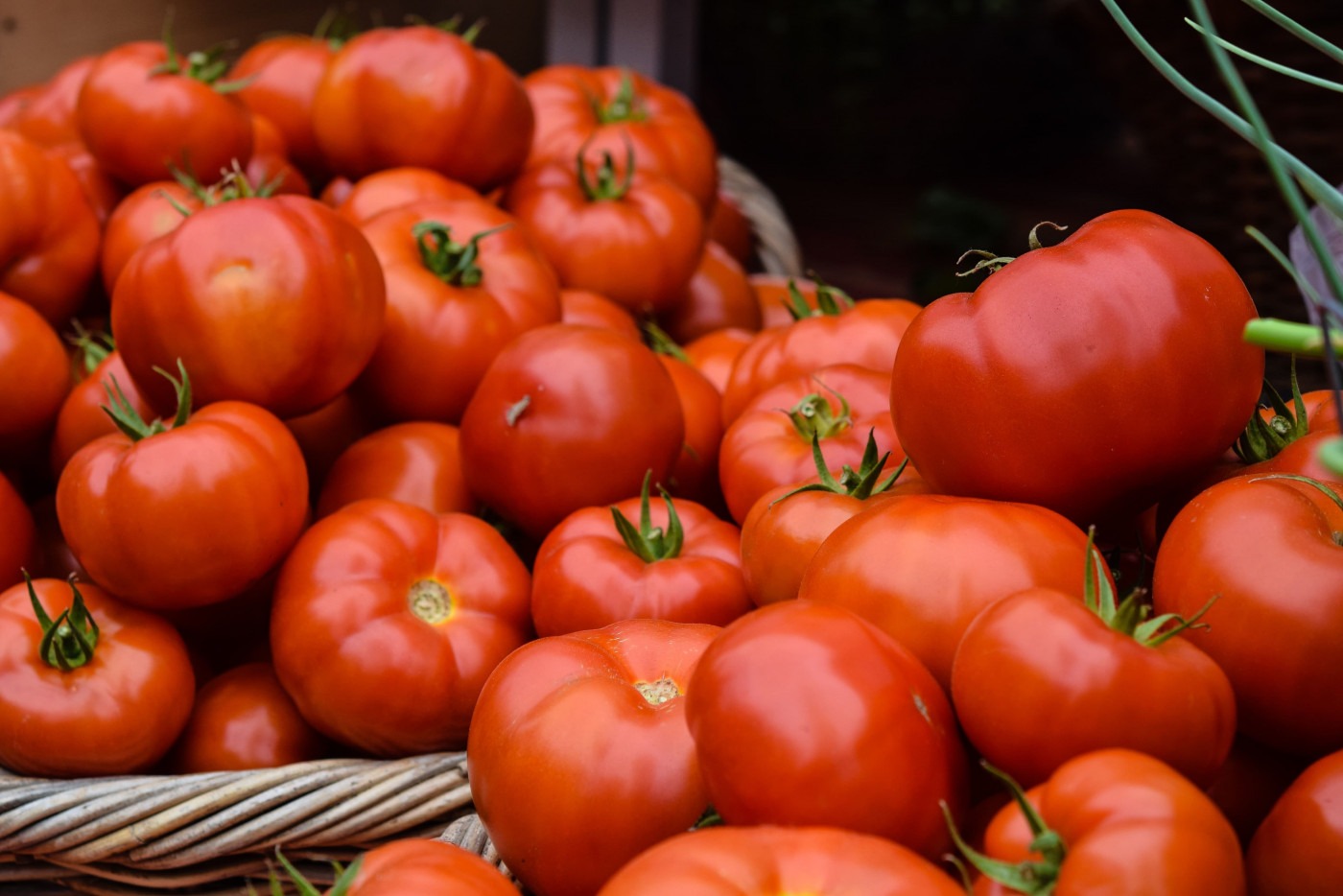Tomatoes in Trouble due to Climate Change
A recent study published in Nature (a British scientific journal), predicts a 6% decline in tomato yields in major growing regions such as Italy and California by 2050. The study attributes this decline to an increase in air temperature caused by global warming.
The type of tomatoes that this study focuses on is processing tomatoes. These are the tomatoes that are used in our sauces, purées, ketchup bottles and other packaged tomato products. While salad tomatoes are grown in greenhouses, processing tomatoes are grown in open fields, making them more vulnerable to environmental change. They grow best between 22-28˚C; over 35˚C, however, yields begin to decline rapidly. This is why global warming is such a threat to tomatoes.
There is an expected yield decrease of 18% in the Italian tomato-growing region of Foggia by 2050.
Currently, 40 million tons of processed tomatoes are grown each year, with 65% coming from California, Italy and China. They are also grown in abundance in some parts of Brazil, sub-Saharan Africa, India and Indonesia. However, in the past few years, tomato yield has been lower than expected in California. By the end of 2021, there was 10% less tomato yield than expected, with the final yield of 10.7 million tons, falling short of the 12-million-ton expectation. This was due to record-high temperatures and record-length drought conditions. The prospect of reduced tomato yields is a big deal for California, seeing as tomatoes are among the state’s top 10 agricultural commodities.
The situation is direr in Italy, as research suggests that global warming will impact Italy more than any other country for tomato production. The negative effects of climate change have already been observed – in 2019, adverse weather conditions (including exceptional heat and unusually high rainfall) led to stressed tomato plants and poor harvests in northern Italy. There is an expected yield decrease of 18% in the Italian tomato-growing region of Foggia by 2050. In an article from Nature , Davide Cammarano, from the University of Aarhus, said that growing tomatoes will be a hard task in Italy 30 years from now.
By the end of 2021, there was 10% less tomato yield than expected, with the final yield of 10.7 million tons, falling short of the 12-million-ton expectation.
Another factor to consider is water restrictions. Tighter water restrictions, along with increased drought, will likely lead to California and Italy not being able to maintain their current processing tomato production numbers. Furthermore, farmers may be forced to use lower quality irrigation water due to water scarcity; this leads to increases in soil salinity, which is unfavourable for tomatoes. To top it all off, the higher ozone levels that global warming causes, make tomatoes more susceptible to diseases such as bacterial leaf spot.
With the threat of tomato sauce shortage looming over us, how can we improve the situation? We can plant more tomatoes in the cooler regions of Northern California, which will benefit from higher temperatures – but even then, the overall production levels in California are still predicted to decrease. Global warming is also set to make other areas of the world, such as Gansu (a province of North-West China) and Inner Mongolia, more suitable for growing processing tomatoes. Even this, however, will not completely supply the predicted deficit.
Currently, 40 million tons of processed tomatoes are grown each year, with 65% coming from California, Italy and China.
Tomatoes are especially promising candidates for gene editing: they are fast to grow, easy to breed and simple to manipulate on a genetic level. Therefore, one proposed solution for the shortage of tomatoes is gene editing. Some universities have already made their own genetically modified tomatoes. In 2018, Geneticist Tomas Cermak and his colleagues at the University of Minnesota, used Crispr gene editing to design a tougher tomato plant. They edited a red currant tomato plant to bear more fruits than its wild counterpart and to contain more lycopene (an antioxidant linked to a lower risk of cancer and heart disease). If a tomato plant can be edited to be more fruitful, surely it can also be edited to be more resistant to bacterial leaf spot and to be able to grow better in hotter conditions.
Tomatoes are especially promising candidates for gene editing: they are fast to grow, easy to breed and simple to manipulate on a genetic level.
Ultimately, the best way to avert this tomato crisis would be to reduce our consumption of carbon emissions. I’m sure we’re all familiar with the little ways in which we can save the planet – cutting down on plastic use, recycling, protesting for policy changes. Only time will tell if our efforts will be enough.

Comments